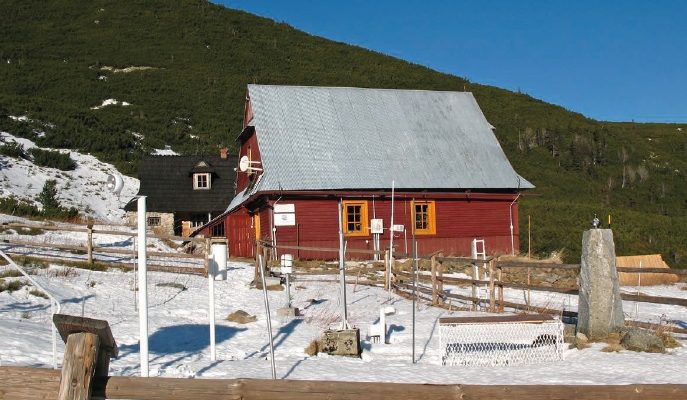M.M. Klapa Research Station

Address
M.M. Kłapa StationHala Gąsienicowa
34-500 Zakopane
Poland
Station manager
Prof. Zofia RączkowskaStation Features
Opening year: 1948 Status: OpenFacilities
Station name and owner
M&M Klapa Research Station is run by the Institute of Geography and Spatial Organization, Polish Academy of Sciences, Department of Geoenvironmental Research.
Location
The station is located in the in Tatra National Park (Tatra Mountains), in the Hala Gasienicowa area (49°15’ N, 20°00’ E). The station is located 1520 m a.s.l. at the upper timberline and the lower limit of the periglacial zone. The highest summit in the area reaches 2301 m a.s.l.
Climate data
Grey colours are WMO Climate Normals including maximum and minimum values. Blue colours are individual years.
Climate data for the stations where extracted via Copernicus Climate Data Store, from the global gridded reanalysis product:
ERA5 monthly averaged data on single levels from 1940 to present.
Description and source code: Roemer J.K. 2023. https://doi.org/10.5281/zenodo.10214922
Data Source: Hersbach et al. 2023. Copernicus Climate Change Service (C3S) Climate Data Store (CDS), https://doi.org/10.24381/cds.f17050d7
Biodiversity and natural environment
The station is situated in a high-mountain environment with an alpine landscape. The mean annual temperature is 2.4 °C, and the mean annual precipitation is 1666 mm (varying from 1043 mm to 2626 mm). The vegetation varies from coniferous forest in the forest zone, trough Pinus mugo shrubs in the sub-alpine zone, alpine meadows in the alpine zone, and bare rocks in sub-nival zone.
History and facilities
Research started in December 1913, when the first meteorological measurements were made. The more complex environmental research was initiated by the Association of Polish Geographers in 1948. In the beginning, the station mainly carried out basic climatic and nival measurements. In 1953, the station became part of the Institute of Geography and Spatial Organization, Polish Academy of Sciences. Since then, the focus of research has also been on geomorphology, climatology, and biogeography. The station is a wooden house. The building has central heating, running water, electric power, and internet. The station has three rooms, i.e. a kitchen, a pantry, a bathroom, and different storage rooms.
General research and databases
The station constitutes a convenient base for geomorphological, climatic and geo-botanic investigations due to its highly favourable location. Geomorphological studies focus on landscape development. At present, the studies concentrate on monitoring of landscape change due to climate change. Climatic studies focus on micro-climatic and topo-climatic issues. Studies on vegetation deal with mapping at various scales and with dynamics of changes in vegetation. Meteorological observations are carried out by the Institute of Meteorology and Water Management, and long-term data are available.
Link to data: https://dataportal.eu-interact.org/stations
Station Monitoring
Human dimension
The station is open to national and international scientists. It can accommodate 4-6 scientists at a time. The nearest inhabited place, i.e. the mountain resort Zakopane, is within 2-3 hours walking distance from the station. The town, Zakopane, has a population of c. 30000 inhabitants.
Access
The station is situated c. 100 km away from the Kraków-Balice Airport and c. 5 km away from the railway and bus stations in Zakopane. Access to the station is by foot. However, transport of heavy equipment is possible by car. Travel time from the Kraków–Balice airport is around half day.

